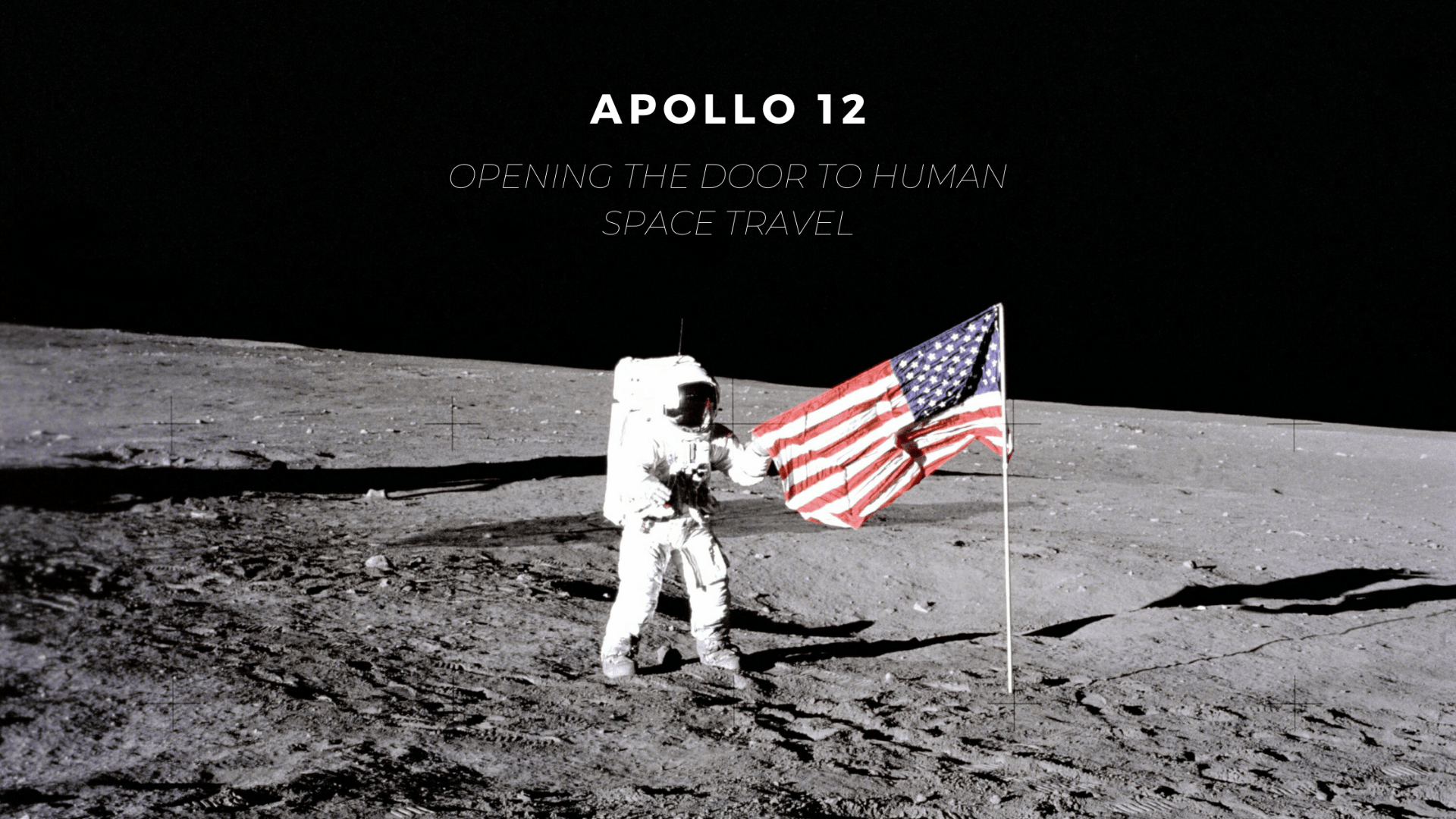
APOLLO 12: OPENING THE DOOR TO SPACE TRAVEL
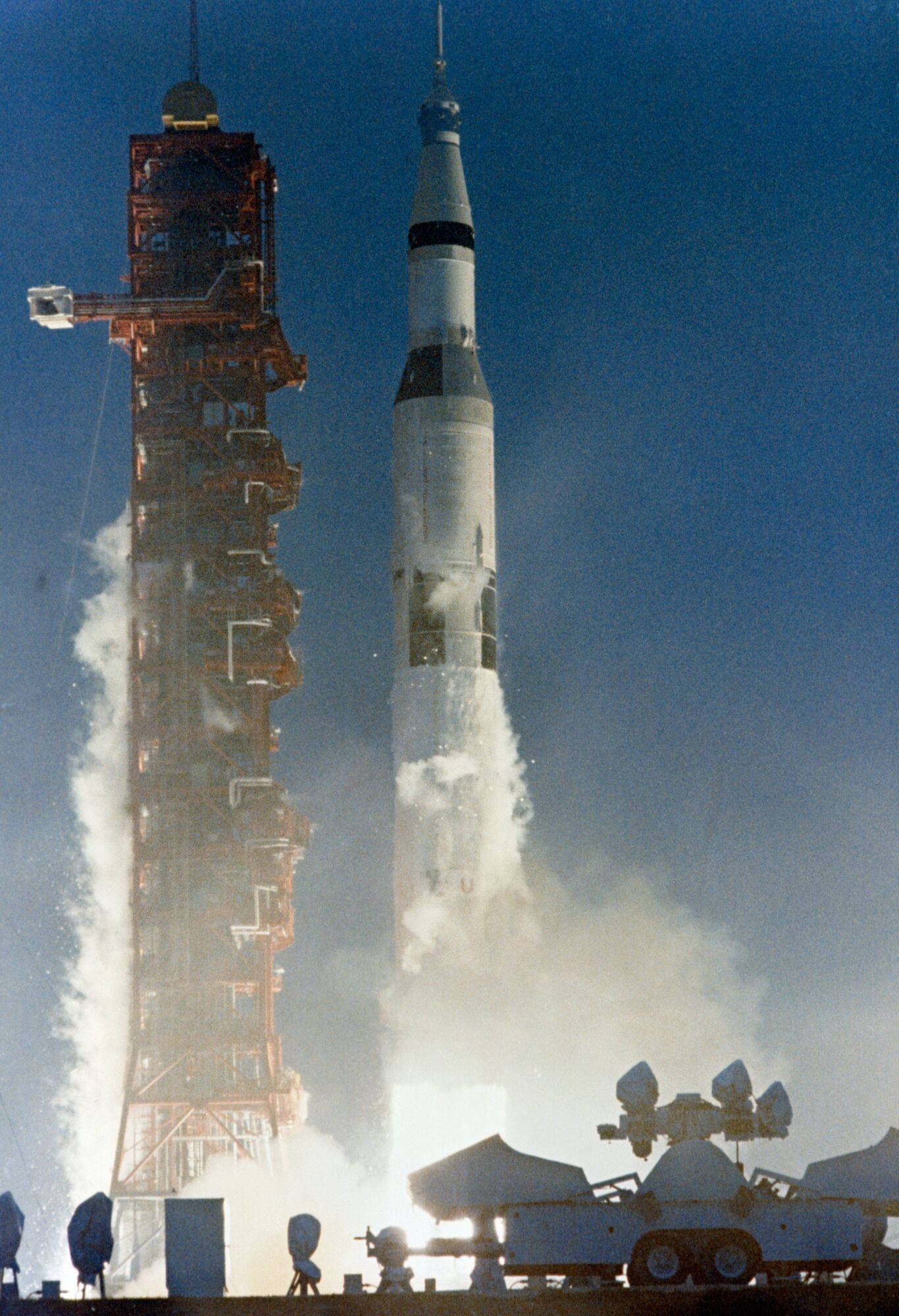
Apollo 12 launched from Cape Kennedy, Florida, on November 14, 1969, into a cloudy, rain-swept sky. Launch controllers lost contact at 36 seconds and again at 52 seconds after the Saturn V launch vehicle was struck by lightning. As the booster's first stage continued firing, Apollo 12 launched into an initial Earth-parking orbit. After one-and-a-half revolutions, a check of the electrical circuits took place, and no significant problems were found. The third stage of the vehicle re-ignited for the second burn of five minutes, 45 seconds, putting Apollo 12 into a trajectory toward the Moon.
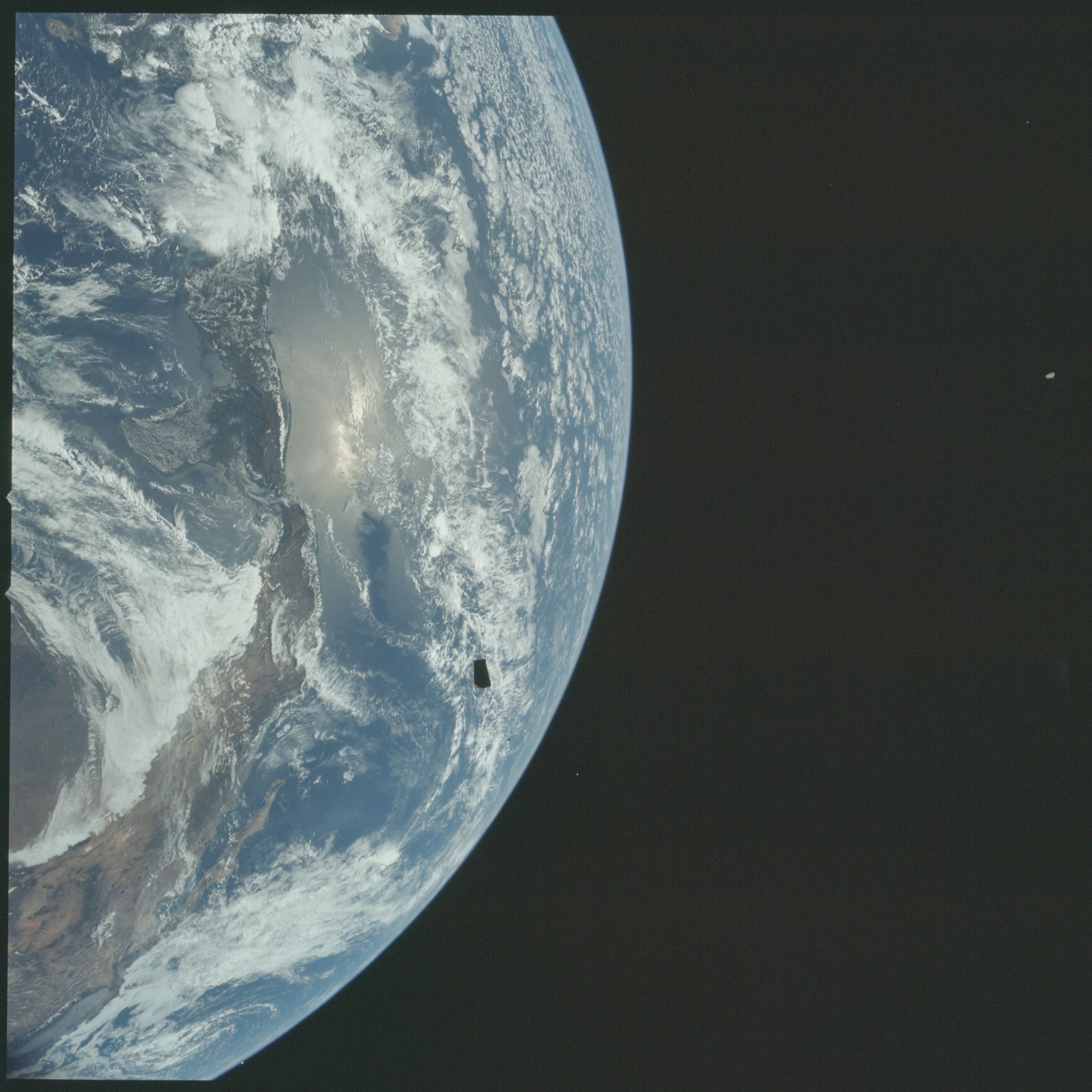
On November 15, Apollo 12's trajectory changed to prepare for later insertion into a non-free-return lunar orbit, which was the first "hybrid" trajectory in Apollo flights. The spacecraft slowed to arrive with the most desirable solar illumination.
On November 17, the first lunar orbit insertion burn began when Apollo 12 went behind the Moon at about 97 miles up. The spacecraft entered into an elliptical orbit after the burn, which lasted for about six minutes.
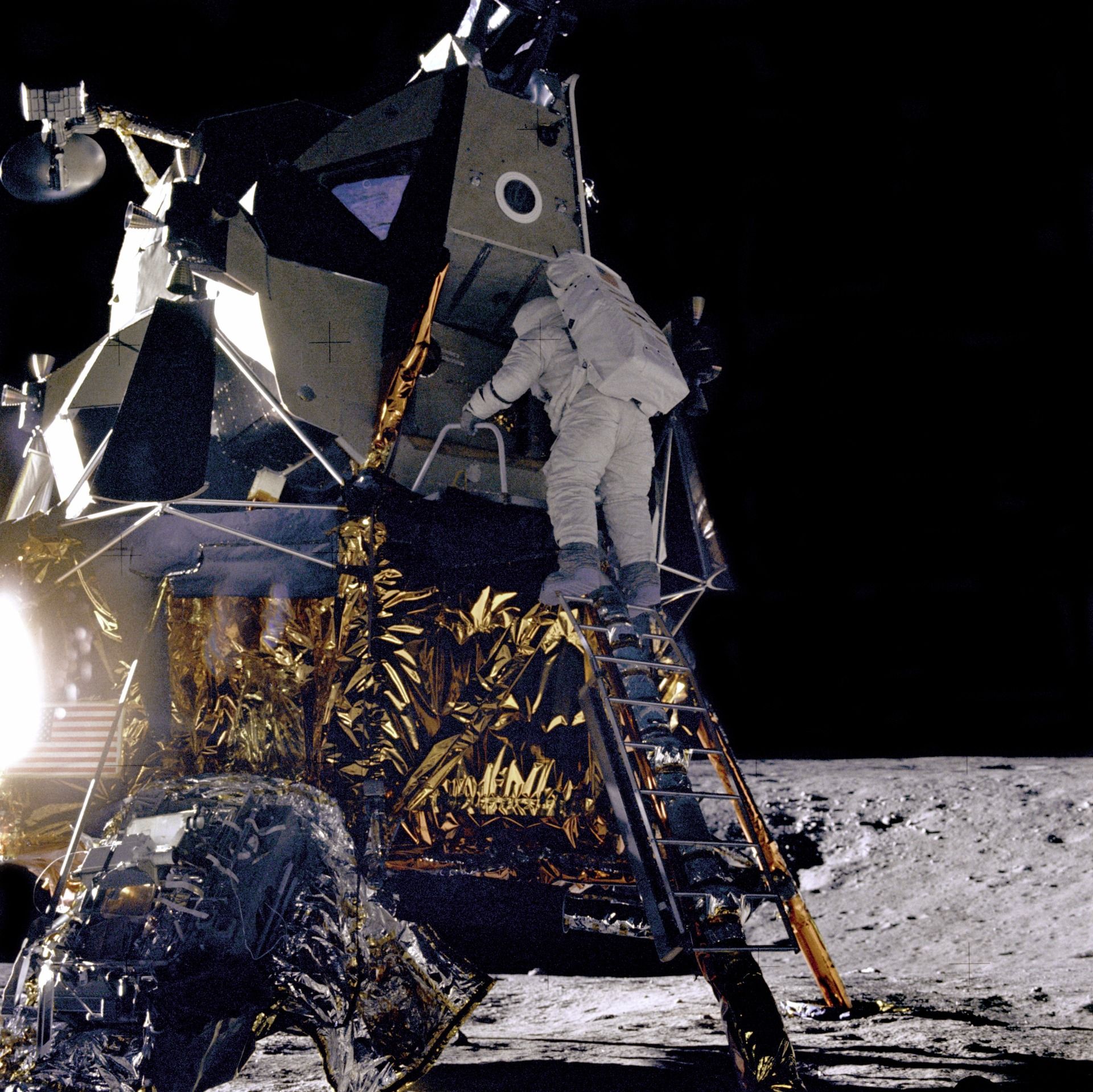
On November 19, with the Lunar Module behind the Moon in the 14th orbit, the descent orbit insertion maneuver began. The Lunar Module descent engine, or LMDE, fired for 29 seconds, lowering Intrepid's orbit. After the Lunar Module emerged from behind the moon and telemetry contact was re-established with Earth. Due to normal mission anomalies, it was initially believed the Lunar Module was in an incorrect descent trajectory for landing in the desired region. However, using a newly developed "Lear" powered-flight data processor, Houston fed by voice the actual trajectory data and correction maneuver information to the Lunar Module crew. "Lear" enabled them to update the automatic downrange navigation computer program, permitting precision touchdown at the intended site. About 110 hours and 32 minutes into the mission, a precision landing occurred. Conrad controlled the descent semi-manually for the last 500 feet, causing them to land closer to the target than expected. Intrepid landed in the Ocean of Storms, about 535 feet northwest from where Surveyor III stood in its crater, and about 120 feet northeast of Head Crater. Richard Gordon — orbiting 69 miles up in the Yankee Clipper, before the first extravehicular activity (EVA) began and three hours after the landing — saw both the Intrepid and Surveyor through a 28-power sextant telescope.
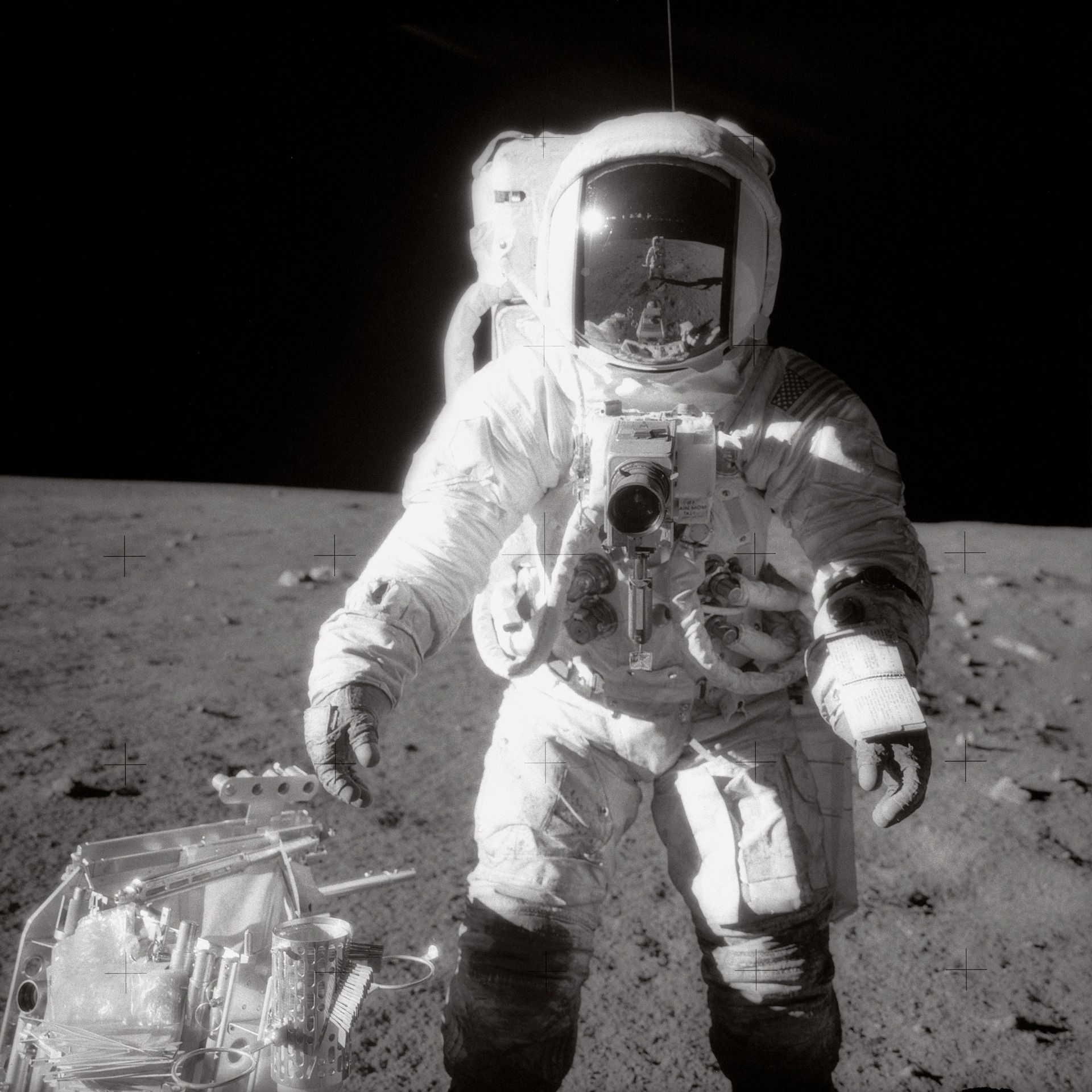
On November 20, an hour and a half earlier than planned, the crew began the second EVA. Conrad left the Intrepid 131 hours and 28 minutes into the mission. The second EVA included collecting 70 pounds of rock and dirt samples, probing two areas to retrieve lunar material, and retrieving 10 to 15 pounds of randomly selected samples. The crew then also retrieved the TV camera and moved it back into the Lunar Module in preparation for the return to Earth. A 5,200-foot traverse of the lunar surface occurred during this time, which is perhaps the most important part of this second EVA. Conrad and Bean performed a rock survey while going south from the Intrepid. They went around the rim of Head Crater, to Bench Crater, around Sharp Crater, moved toward Halo Crater. After, they entered the 650-foot-wide Surveyor Crater to retrieve parts of Surveyor III, perched around 150 feet from the southern quadrant's edge.

Gathering surface samples as they went, Conrad and Bean then walked back to Intrepid. They returned to the spacecraft 134 hours and 49 minutes into the mission. Bean re-entered the Lunar Module at about 135 hours and 10 minutes, and Conrad followed at 135 hours and 22 minutes. The second EVA lasted three hours and 48 minutes. The crew then removed and jettisoned their pressurized suits before eating a meal.
Approximately six hours later, still on November 20, after a total of 31.6 hours on the Moon, the Lunar Module ascent stage fired for about seven minutes, putting Intrepid into an initial orbit for rendezvous and docking with the Yankee Clipper. Gordon's rendezvous and docking maneuvers were televised to Earth about three and a half hours later.
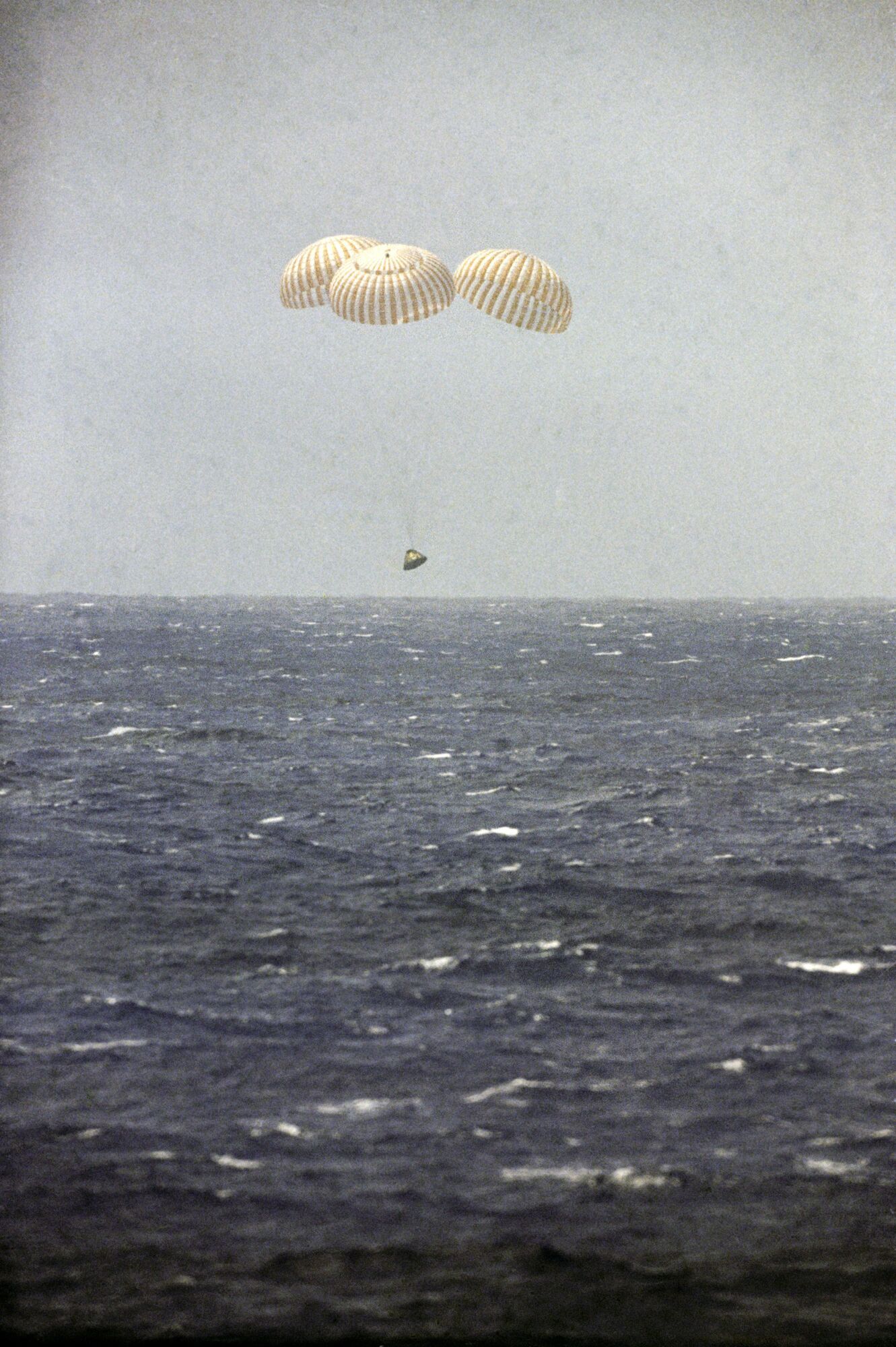
The return flight was uneventful. A midcourse correction maneuver occurred November 22, when Apollo 12 was about 208,000 miles from Earth. On November 23, when the spacecraft was 108,000 miles from Earth, the crew held a televised news conference, followed by sleep. Following the same re-entry procedure for Apollo 11, on November 24, Apollo 12 splashed down in the Pacific Ocean, ending its 10-day flight. Splashdown occurred about 400 miles southeast of American Samoa and was close to three miles from the target area. It was also three miles south of and within sight of USS Hornet's recovery ship. The flight was a total of 244 hours, 36 minutes, 25 seconds — just 62 seconds longer than planned. Apollo 12 mission proved that traveling to, and landing on, the Moon was not a fluke or a miracle. It was an event that could and would be repeated. Apollo 12 was another step in closing the gap between us and the stars.
